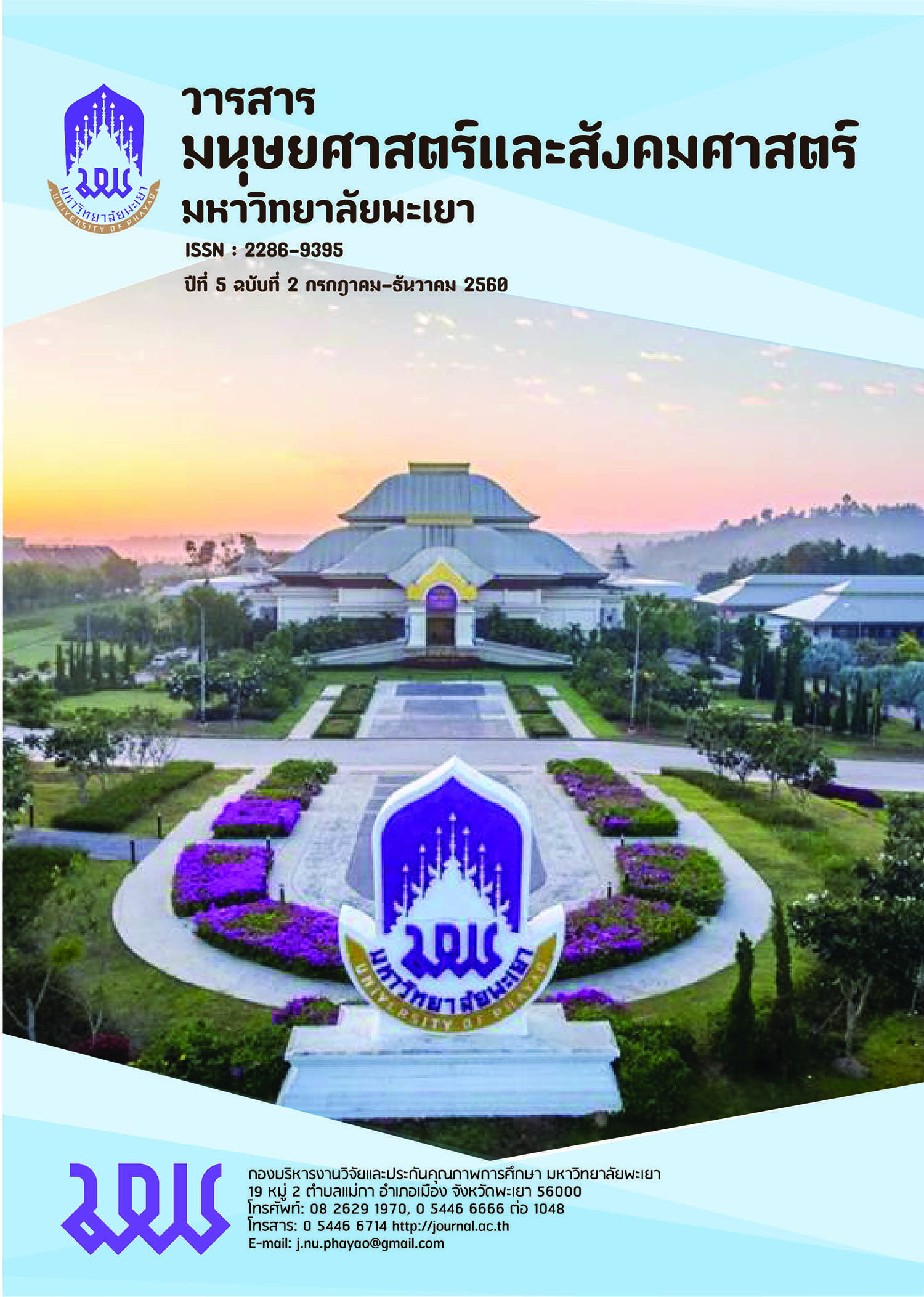The innovation of television program and participle of deaf people
Keywords:
Deaf People, Participation, Television Program, InnovationAbstract
The study of the innovation of television program and participation of deaf people had focused on sign languages in television program for hearing-impaired or deaf people. Thai PBS broadcast program, JAI TAO KAN, had been in use for quality research by in-depth interview and the focus group. As a result, the sender and economy are the important factors that made the program possible for deaf people had been. Because JAI TAO KAN was supported from media department to give the benefit to the public not to make the profit so the program could broadcast on free television network. Next, the law and technology factor had become the impelled to the media to produce more programs for deaf people and to help them have the right and freedom in the media. However, a person in normal society unaware of the physical limitations and communication of the deaf and the equality of humanity so that’s the culture and society factor was the reason to television program for deaf in Thailand was limited.
JAI TAO KAN production team were formed by deaf staffs and normal staffs. They could communicate throughout the process because they were all part of the key factors as viewers, receivers, messengers, productions, co-productions and actors. The host of the program was deaf but the host had a privilege in pre-production, production and post- production while on an executive level still had none.
The study of satisfaction of the audiences between deaf and normal audiences to the program, both were satisfy with the content and concept of the program because its entertained and educated also had variety ways for deaf people to perform their best potential. By supportive the sign languages and closed captions help the hearing-impaired or deaf people understand the program and enjoy it even more. However, there were some problems from the deaf and normal audiences. First, they both agreed that the air time of the program was not suitable. Second, the closed captions were too small. Next the guests of the program were unknown or they are not celebrities. But the most important problem was the conversation was too long and they could not catch the captions.
The study on utilization showed that the deaf audience received a lot of benefits from the program. They had useful knowledge. Also they could make a conversation with the member of their family. These methods will help reducing inequality in today society and create an inspiration for other. As for the normal audiences, they will gain awareness to the deaf people in society that they both have equality in knowledge, ability and potentials and that deaf people were not difference than normal people.
References
นิสิต พูนผล. ผู้จัดการฝ่ายผลิตและจัดหารายการ สถานีโทรทัศน์ไทยพีบีเอส. (17 พฤศจิกายน 2558). สัมภาษณ์.
นิลาวัลย์ พานิชรุ่งเรือง. (2540). ความน่าเชื่อถือและความพึงพอใจของประชาชนในกรุงเทพมหานครที่มีต่อรายการข่าวภาคค่ำ ทางโทรทัศน์ท้ัง 5 ช่อง (3,5,7,9,11). วิทยานิพนธ์ปริญญามหาบัณฑิต มหาวิทยาลัยธรรมศาสตร์.
เบญจวรรณ สุพันอ่างทอง. ครีเอทีฟ บริษัท โพลีพลัส เอ็นเตอร์เทนเม้นท์ จำกัด. (22 ธันวาคม 2558). สัมภาษณ์.
ปริญญา สิริอัตตะกุล. (2555). ความสามารถในการเข้าถึงข้อมูลข่าวสารเพื่อการพึ่งตนเองของผู้พิการทางการได้ยิน: กรณีศึกษาจังหวัดชลบุรี. เอกสารวิจัย สถาบันสร้างเสริมสุขภาพคนพิการสถาบันวิจัยระบบสาธารณสุข และสำนักงานกองทุนสนับสนุนการสร้างเสริมสุขภาพ.
ปาริชาติ สถาปิตานนท์ และคณะ. (2549). การสื่อสารแบบมีส่วนร่วมและการพัฒนาชุมชน :จากแนวคิดสู่ปฏิบัติการวิจัยในสังคมไทย. กรุงเทพฯ: สำนักงานกองทุนสนับสนุนการวิจัย (สกว.).
พนิต เงางาม. (2541). การพึ่งพาข่าวสารทางสิ่งพิมพ์ของคนหูหนวก. วิทยานิพนธ์ปริญญามหาบัณฑิต จุฬาลงกรณ์มหาวิทยาลัย.
พีระ จิระโสภณ. (2529). แนวทางการศึกษาใช้ประโยชน์และการได้รับความพึงพอใจจากสื่อมวลชน. หน่วยที่ 9-11. นนทบุรี: สำนักพิมพ์มหาวิทยลัยสุโขทัยธรรมาธิราช.
มนฤดี ทองกลอย. (2551). การเข้าถึงสื่อมวลชนของเยาวชนพิการในเขตกรุงเทพมหานครและปริมณฑล. เอกสารวิจัย วิทยาลัยราชสุดา มหาวิทยาลัยมหิดล.
วราห์ หนูฤทธิ์. (2549). ความพึงพอใจกับการใช้สื่อโทรทัศน์ของคนหูหนวก. วิทยานิพนธ์ปริญญามหาบัณฑิต มหาวิทยาลัยธรรมศาสตร์.
วลัยลักษณ์ คงนิล. (2542). การรับรู้ การแปลความหมาย การจดจำ และอารมณ์จากการเปิดรับสื่อโทรทัศน์ของคนหูหนวก. วิทยานิพนธ์ปริญญามหาบัณฑิต จุฬาลงกรณ์มหาวิทยาลัย.
วัชรินทร์ ชาลี. พิธีกรรายการใจเท่ากัน. (13 มิถุนายน 2558). สัมภาษณ์.
ศิวนารถ หงษ์ประยูร. (2558). การพัฒนารายการข่าวทางสื่ออินเทอร์เน็ตทีวี (IPTV) สำหรับคนหูหนวก. สุทธิปริทัศน์. 29. (เมษายน-มิถุนายน): 292.
ศิวนารถ หงส์ประยูร. รองคณบดีฝ่ายวิชาการ คณะนิเทศศาสตร์ มหาวิทยาลัยธุรกิจบัณฑิต. (5 ตุลาคม 2558). สัมภาษณ์.
สมสุข หินวิมาน, ศิริมิตร ประพันธ์ธุรกิจ, ภัทธีรา สารากรบริรักษ์, อารดา ครุจิต, กรรณิกา รุ่งเจริญพงษ์, กุลนารีเสือโรจน์. (2557). ความรู้เบื้องต้นทางวิทยุและโทรทัศน์. พิมพ์ครั้งที่ 2. กรุงเทพฯ: สำนักพิมพ์มหาวิทยาลัยธรรมศาสตร์.
McQuail, Dennis. (2005). McQuail s Mass Communication Theory. London : Sage. McLuhan.
Downloads
Published
How to Cite
Issue
Section
License
ผู้นิพนธ์ต้องรับผิดชอบข้อความในบทนิพนธ์ของตน มหาวิทยาลัยพะเยาไม่จำเป็นต้องเห็นด้วยกับบทความที่ตีพิมพ์เสมอไป ผู้สนใจสามารถคัดลอก และนำไปใช้ได้ แต่จะต้องขออนุมัติเจ้าของ และได้รับการอนุมัติเป็นลายลักษณ์อักษรก่อน พร้อมกับมีการอ้างอิงและกล่าวคำขอบคุณให้ถูกต้องด้วย
The authors are themselves responsible for their contents. Signed articles may not always reflect the opinion of University of Phayao. The articles can be reproduced and reprinted, provided that permission is given by the authors and acknowledgement must be given.








